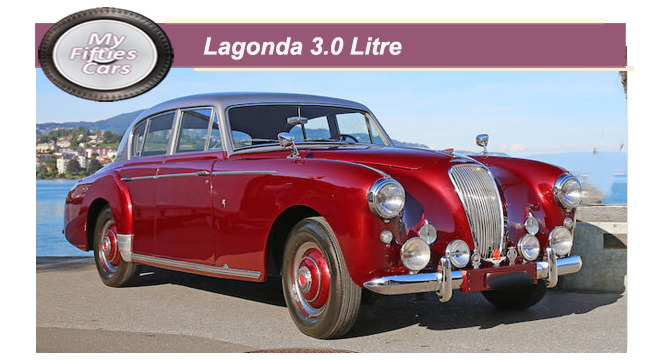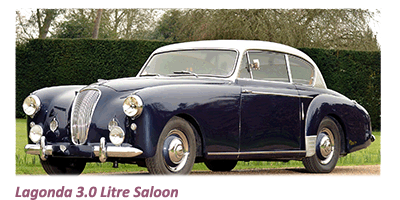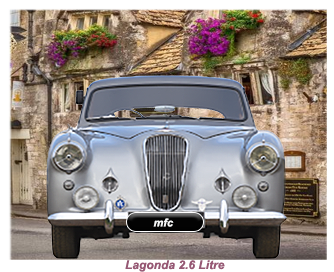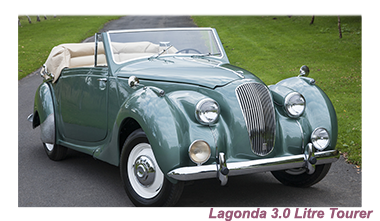
Following the limp performance of their 2.6, in 1953 Lagonda decided that the time was right to launch a larger model, this time in the 3-litre bracket.
Despite the fact that the 2.6 litre Lagonda had only been on the market for a few years, sales had dropped and automobiles remained unsold by 1953, since the style had quickly become outdated.Brooklands of Bond Street, Lagonda's London Distributor, recognized an opportunity and purchased the last 16 Mark II 2.6 litre cars with the goal of making them more marketable. The cars were delivered to Tickford, a coach maker in Newport Pagnell, where they were fitted with new, more modern coachwork.
The new coachwork impressed Lagonda so much that it was adopted for the upcoming 3.0 litre model. Because the new Tickford body was so much heavier, the extra power from the 3.0 litre engine was crucial, as the newer 3 litre model would have been slower than the previous 2.6 litre model.
O LLagonda called on the services of WO Bentley to design the engine, which came out as a 2.9 Liter, capable of generating 140 bhp.
LLagonda called on the services of WO Bentley to design the engine, which came out as a 2.9 Liter, capable of generating 140 bhp.
 The 3-litre was initially launched as a pleasant -looking four seater two door coupé, with the bodywork produced for Lagonda by another David Brown subsidiary, Tickford.
The 3-litre was initially launched as a pleasant -looking four seater two door coupé, with the bodywork produced for Lagonda by another David Brown subsidiary, Tickford.
 Almost simultaneously Lagonda also introduced a drophead coupé with the coachwork once again manufactured by Tickford, who had been entirely acquired by David Brown through his Aston Martin company.
Almost simultaneously Lagonda also introduced a drophead coupé with the coachwork once again manufactured by Tickford, who had been entirely acquired by David Brown through his Aston Martin company.
![]()

 As the UK was moving into the mid-Fifties, people were looking for more in the way of luxury in their motor cars, and the Lagonda indeed offered them that.
As the UK was moving into the mid-Fifties, people were looking for more in the way of luxury in their motor cars, and the Lagonda indeed offered them that.
 Indications that happy days were here agian for the UK car industry was that one of the more luxurious aspects of the 3.0 litre was that the car came fitted with a heater, radio and even integral hydraulic jacks to make the strenuous task of changing a puncture that much more comfortable- especially as there would no chaffeur around to do the job.
Indications that happy days were here agian for the UK car industry was that one of the more luxurious aspects of the 3.0 litre was that the car came fitted with a heater, radio and even integral hydraulic jacks to make the strenuous task of changing a puncture that much more comfortable- especially as there would no chaffeur around to do the job.
Externally the Lagonda offered a pleasing look, and for those who wanted to stand out, there was a choice of either a single or two-tone paint scheme.
During the five years that it was in production, the Lagonda 3.0 litre sold a far from insiring 270 models.

 In 1958,with sales of Aston Martin cars slowly beginning to gain momentum , David Brown decided that the time was right to put all of his eggs in one particular basket - and that basket was Aston Martin, meaning that production at Lagonda was suspended.
In 1958,with sales of Aston Martin cars slowly beginning to gain momentum , David Brown decided that the time was right to put all of his eggs in one particular basket - and that basket was Aston Martin, meaning that production at Lagonda was suspended.


